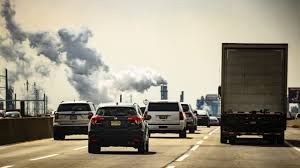
Breaking News
 Japan's bond selloff is a warning to the world
Japan's bond selloff is a warning to the world
 The Algocracy Agenda: How AI and the Deep State Are Digitizing Tyranny
The Algocracy Agenda: How AI and the Deep State Are Digitizing Tyranny
 Former Israeli Prime Minister Ehud Olmert Accuses Israeli Govt of Committing War Crimes in Gaza
Former Israeli Prime Minister Ehud Olmert Accuses Israeli Govt of Committing War Crimes in Gaza
 Inside North Korea: A Survivor's Story of Socialism, Starvation, Torture, and Escape
Inside North Korea: A Survivor's Story of Socialism, Starvation, Torture, and Escape
Top Tech News
 New AI data centers will use the same electricity as 2 million homes
New AI data centers will use the same electricity as 2 million homes
 Is All of This Self-Monitoring Making Us Paranoid?
Is All of This Self-Monitoring Making Us Paranoid?
 Cavorite X7 makes history with first fan-in-wing transition flight
Cavorite X7 makes history with first fan-in-wing transition flight
 Laser-powered fusion experiment more than doubles its power output
Laser-powered fusion experiment more than doubles its power output
 Watch: Jetson's One Aircraft Just Competed in the First eVTOL Race
Watch: Jetson's One Aircraft Just Competed in the First eVTOL Race
 Cab-less truck glider leaps autonomously between road and rail
Cab-less truck glider leaps autonomously between road and rail
 Can Tesla DOJO Chips Pass Nvidia GPUs?
Can Tesla DOJO Chips Pass Nvidia GPUs?
 Iron-fortified lumber could be a greener alternative to steel beams
Iron-fortified lumber could be a greener alternative to steel beams
 One man, 856 venom hits, and the path to a universal snakebite cure
One man, 856 venom hits, and the path to a universal snakebite cure
 Dr. McCullough reveals cancer-fighting drug Big Pharma hopes you never hear about…
Dr. McCullough reveals cancer-fighting drug Big Pharma hopes you never hear about…
The Big Mistake They Made

And not just in California.
CARB is a state-level bureaucracy that operates effectively as a national one by emitting regulations for California that are followed by the vehicle manufacturers because so many other states have aped CARB's regulatory emissions that they are effectively obliged to manufacture only "California compliant" vehicles. It would be too expensive to make cars for California and the dozen other states (including New York and most of the New England states as well as western states such as Oregon and Washington) that have aped California's regulatory regime and then make another batch and sell those in the other states that have not aped California's regulatory regime.
It would have been much better for the manufacturers if they'd not kowtowed to California in the first place, which is just what they did a long time ago.
CARB began emitting regulations back in the '70s. The regs required additional hardware be added to new vehicles in order for them to be legal to sell in the state. The regs also limited what could be sold in the state. For example, while GM's Pontiac division could sell you a new 1979 Trans-Am with the 400 Pontiac V8 and a manual transmission in 49 states, you could only buy the car with the Oldsmobile 403 V8 and an automatic in California, because it was the only drivetrain that was compliant with CARB's regs. Similarly, certain parts could not be legally sold in CA either unless they carried a "CARB" approved number. (This is still the case today, by the way. There are a plethora of parts that cannot be purchased in CA and that are illegal to install, even if it can be proved they do not increase emissions. Legally, ther only thing that matters is whether they're . . . legal.)
GM's mistake – the industry's mistake – was to play along to begin with. That never works out – except to the benefit of your enemy. Arguably, what the vehicle manufacturers ought to have done – back in the '70s – was to tell California its additionally onerous emissions regulations – which exceeded the federal EPA's requirements – rendered it unfeasible for them to sell new vehicles in the state of California. That they could not justify the additional expense of adding equipment to cars sold only in California in order to be able to sell them legally in the state. This would very quickly have imparted pressure on California's politicians to yank CARB's chain because millions of Californians wanting to be able to buy a new car would have demanded it.



